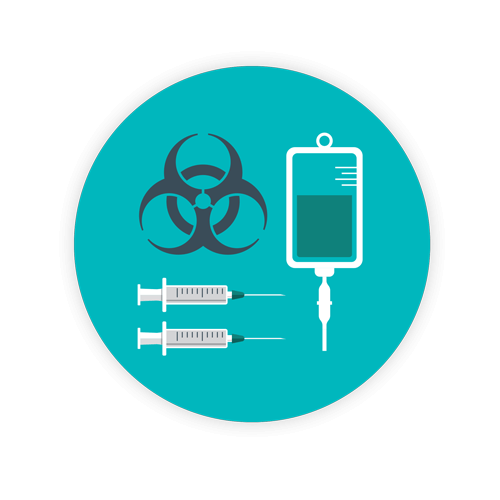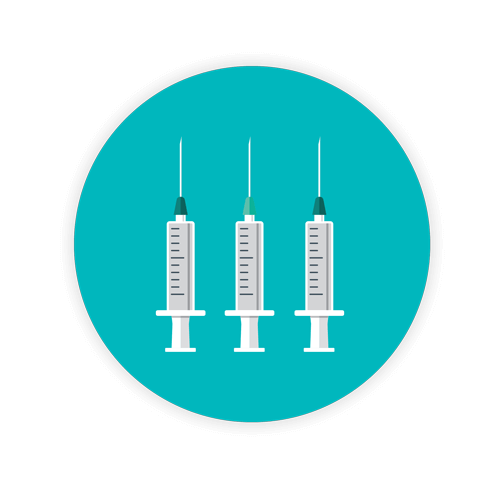Guide to New York Medical Waste Regulations

Compliance with New York medical waste regulations is crucial for healthcare providers and businesses handling medical waste across the state. Proper waste segregation, storage and disposal are essential to avoid fines, penalties and potential legal action. This guide provides an overview of state and federal regulations, waste classification and compliance requirements to ensure safe and compliant medical waste management in New York.
TOPICS WE WILL COVER:
- How Does New York Define Medical Waste?
- Who Must Comply with New York Medical Waste Regulations?
- Regulatory Authorities Overseeing Medical Waste in New York
- Compliance with Biohazard Waste Regulations in New York
- Federal Regulations Impacting Medical Waste in New York
- Navigating New York’s Hazardous Medical Waste Regulations
- Ensure Compliance with Expert Guidance Today
How Does New York Define Medical Waste?
Be aware that there’s a difference between regulated and non-regulated medical waste. Daniels Health is aware of those differences. We’re experienced in helping guide waste generators, large or small, through the minefield of federal and state guidelines that cover everything from chemo waste to pathological waste and pharmaceutical waste disposal.
 In New York, the Department of Environmental Conservation (DEC) defines regulated medical waste as any type of material that is generated through biological testing, research and healthcare scenarios. That includes:
In New York, the Department of Environmental Conservation (DEC) defines regulated medical waste as any type of material that is generated through biological testing, research and healthcare scenarios. That includes:
- Needles and syringes (otherwise known as sharps)
- Human blood and blood products
- Infectious animal waste
- Human pathological waste
- Microbiological waste materials such as cultures
- any other type of biohazard waste, such as those that may be contaminated with infectious agents
Who Must Comply with New York Medical Waste Regulations?
Facilities required to comply with New York medical waste regulations include:
- Hospitals
- Funeral homes
- Clinical laboratories
- Physicians’ officesPharmaceutical companies
- Correctional facilities
- Nursing homes
- Home health providers
Regulatory Authorities Overseeing Medical Waste in New York
Proper management of medical waste in New York requires compliance with various regulatory bodies. Healthcare facilities must adhere to the guidelines set forth by the DEC and other agencies involved in medical waste regulation, such as:

- Environmental Protection Agency (EPA)—Governs federal medical waste regulations and hazardous waste management.
- Department of Transportation (DOT)—Regulates the transportation and packaging of medical waste to ensure safe transit.
New York State Agencies Involved in Medical Waste Regulation
In New York State, medical waste regulations are enforced by several key agencies, including:
- New York State Department of Health (DOH)
- Wadsworth Center
- Department of Environmental Conservation (DEC)
These agencies work collectively to ensure public health and environmental safety by enforcing stringent medical waste management practices.
Compliance with Biohazard Waste Regulations in New York
In New York, medical waste generators are responsible for the proper storage, collection and labeling of regulated medical waste. Compliance includes:
- Completing the medical waste tracking form for off-site transportation.
- Adhering to local health department requirements, which may include additional reporting and documentation obligations.
- Ensuring waste is stored in approved, labeled containers until disposal.
In New York, details regarding the disposal of medical waste are found on the DEC’s website under Title 15, Article 27, Chapter 431. Failure to comply with these regulations can result in significant fines and penalties for healthcare facilities.
Federal Regulations Impacting Medical Waste in New York
Beyond state-level regulations, several federal laws and regulations govern the handling, collection, transportation and disposal of regulated medical waste in New York. Key federal regulations include:
- Medical Waste Tracking Act (MWTA)
- Resource Conservation and Recovery Act (RCRA)
- The Clean Air Act (CAA)
- The Comprehensive Environmental Response, Compensation, and Liability Act
- Occupational Safety and Health Administration (OSHA)

Note that guidelines for the Occupational Exposure to Bloodborne Pathogen Standard are applicable in all scenarios, as is handling or exposure to sharps, and medical waste of any kind, in addition to employee training for the handling of potentially hazardous or contaminated materials can pose a risk to health care workers.
Additional federal agencies involved include:
- US Postal Service (USPS)
- US Department of Agriculture (USDA)
- US Public Health Service (USPHS)
- Food and Drug Administration (FDA)
Navigating New York’s Hazardous Medical Waste Regulations
New York State has established comprehensive and stringent guidelines to ensure proper hazardous medical waste management across healthcare facilities. The state’s regulatory framework leaves no room for ambiguity, providing clear directives to waste generators of all sizes to achieve compliance with both federal and state regulations.
Healthcare facilities must stay up to date with evolving regulations to avoid non-compliance penalties. A number of updates and changes were slated for hazardous waste regulations in 2018. State regulations can be found under revisions of hazardous waste management (6 NYCRR part 370 series).
However, the applicable federal EPA regulations are found under 40 Code of Federal Regulations (CFR) and may also be referred to for the same topics. For example:
| State Regulation (6 NYCRR) | EPA regulation Code of Federal Regulations (40 CFR) | Description |
|---|---|---|
| Part 370 | Part 260 | Hazardous waste management system: general |
| Part 371 | Part 261 | Identification and listing of hazardous waste |
| Part 372 | Part 262 | Standards applicable to generators of hazardous waste |
| Subpart 374-1 | Part 266 | Standards for the management of specific hazardous wastes and specific types of hazardous waste management facilities |
| Part 376 | Part 268 | Land disposal restrictions and treatment standards |
Note: this does not include all of the current and equivalent federal hazardous waste management regulations.
New York’s medical waste regulations, guidelines and requirements are comprehensive, addressing a wide range of scenarios, facility types, and waste generators—both large and small. Compliance with these clearly defined regulations is essential, as a lack of awareness does not exempt organizations from responsibility. Daniels Health offers expert guidance to help healthcare facilities navigate the complexities of regulatory compliance, ensuring adherence to all state and federal mandates with tailored, compliant solutions.
Ensure Compliance with Expert Guidance Today
Staying compliant with New York medical waste regulations can be a complex and challenging process. Healthcare facilities must take proactive measures to ensure adherence, as non-compliance is not an option. Choosing professional medical waste disposal services in New York enables facilities to implement best practices, streamline compliance procedures and minimize the risk of fines and penalties associated with improper waste disposal.
For expert guidance on navigating New York’s stringent hazardous waste regulations, trust Daniels Health. Our compliance specialists provide tailored solutions to meet your facility’s unique waste management requirements, ensuring safety, efficiency and full regulatory compliance. Contact us today to learn more.
Let's Talk!
Your time is valuable, and we don’t want to play hard to get. You can either phone us directly on the details listed on our contact page, or feel free to fill out this short form and one of our team members will get back to you as quickly as possible.
